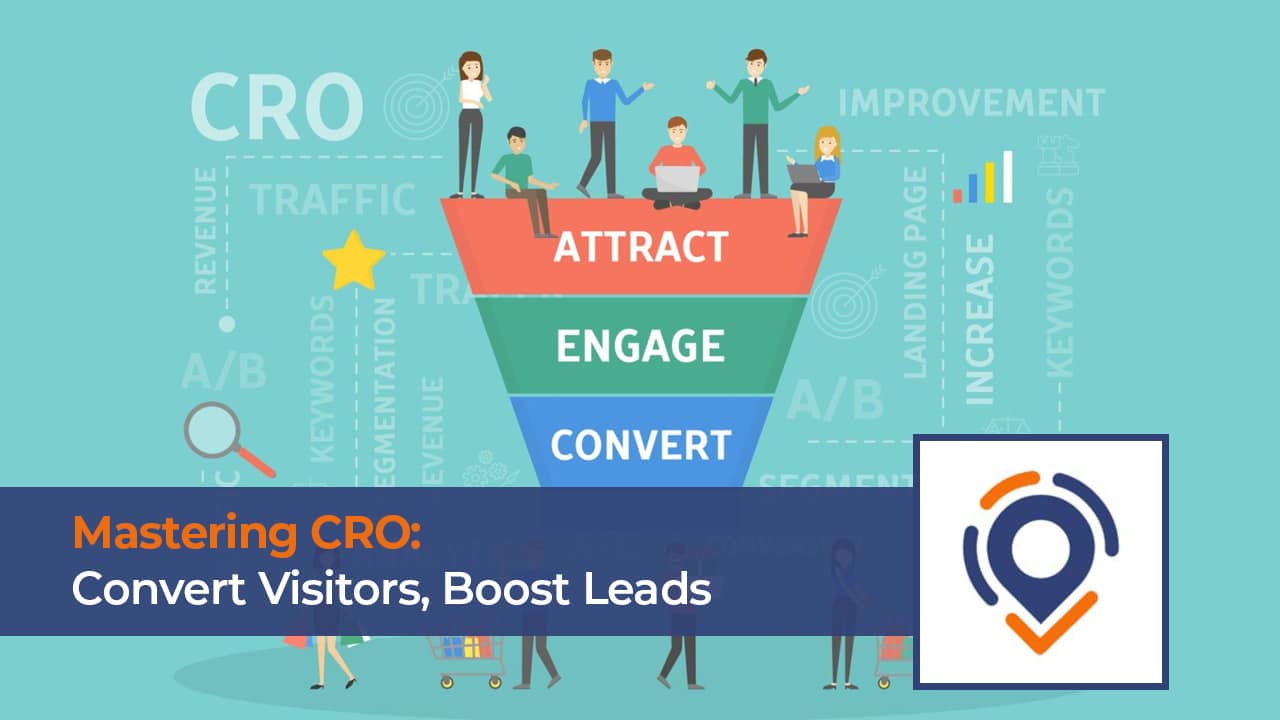Mastering Conversion Rate Optimization: From Landing Page to Lead
In today’s fast-paced digital landscape, the success of any online business relies heavily on its ability to convert website visitors into valuable leads. Mastering Conversion Rate Optimization (CRO) is a critical aspect of achieving this goal. This comprehensive guide will take you through the essential strategies and techniques to optimize every stage of the conversion funnel, ensuring that your landing pages become powerful tools for turning casual browsers into loyal leads.
I. Introduction
Definition of Conversion Rate Optimization (CRO)
Conversion Rate Optimization (CRO) is the process of optimizing your website or landing pages to increase the percentage of visitors who take a desired action, such as making a purchase, filling out a form, or signing up for a newsletter.
Importance of CRO in the Digital Landscape
In a highly competitive online environment, where user attention spans are limited, CRO becomes a strategic necessity. It’s not just about driving traffic to your site; it’s about ensuring that the traffic you attract translates into tangible business outcomes.
II. Understanding the Conversion Funnel
AIDA Model (Awareness, Interest, Desire, Action)
The AIDA model serves as a fundamental framework for understanding the stages a customer goes through before making a conversion. By addressing each stage strategically, you can guide visitors seamlessly through the conversion funnel.
Mapping the Customer Journey
Understanding the customer journey is essential for tailoring your CRO efforts. Map out the touchpoints where users interact with your brand, allowing you to identify opportunities for optimization.
III. Crafting an Effective Landing Page
Anatomy of a High-Converting Landing Page
Compelling Headlines and Subheadings
The first impression matters. Craft headlines and subheadings that grab attention and clearly communicate the value proposition.
Persuasive Copywriting
Engage your audience with compelling and persuasive copy. Clearly communicate the benefits of your product or service.
Clear and Compelling Calls-to-Action (CTAs)
Guide visitors toward the desired action with well-placed and enticing CTAs. Make it easy for them to take the next step.
Designing for Conversion
User-Friendly Layouts
Simplify the user experience with intuitive layouts. Ensure that visitors can easily navigate your page and find what they’re looking for.
Mobile Responsiveness
Given the prevalence of mobile users, optimize your landing page for various devices. A seamless experience across platforms enhances conversion rates.
Visual Elements that Drive Engagement
Incorporate visually appealing elements, such as images and videos, to capture attention and convey information effectively.
IV. A/B Testing for Optimization
Importance of A/B Testing
A/B testing involves comparing two versions of a webpage to determine which performs better. It’s a continuous improvement process that allows you to refine elements for maximum impact.
A/B Testing Best Practices
Testing One Variable at a Time
Isolate variables to identify what specifically influences user behavior. This focused approach provides clear insights into what works and what doesn’t.
Sample Size Considerations
Ensure that your test sample size is statistically significant. Small sample sizes may lead to unreliable results, while larger samples provide more accurate insights.
Statistical Significance in Results
Understand the statistical significance of your findings. Make decisions based on data that is reliable and meaningful.
V. Optimizing User Experience
User-Centric Design
Minimizing Page Load Times
Fast-loading pages contribute to a positive user experience. Users are more likely to stay engaged when they aren’t waiting for content to load.
Streamlining Navigation
Simplify the navigation process. Intuitive menus and clear pathways help users find what they need efficiently.
Addressing User Concerns
Building Trust Through Testimonials and Reviews
Feature testimonials and reviews prominently. Positive feedback builds trust and credibility, easing potential concerns.
Providing Clear FAQs and Contact Information
Anticipate user questions and provide clear answers through FAQs. Additionally, ensure that contact information is easily accessible for users seeking further assistance.
VI. Implementing Personalization
Tailoring Content to User Segments
Leveraging User Data for Personalized Experiences
Utilize data to create personalized experiences. Tailor content based on user preferences, behaviors, and demographics.
Dynamic Content and Personalized Recommendations
Implement dynamic content that adapts to user interactions. Provide personalized product recommendations based on their browsing history and preferences.
Utilizing Retargeting Strategies
Engaging Users Who Didn’t Convert on the First Visit
Retargeting involves reaching out to users who visited your site but didn’t convert. Remind them of your value proposition through targeted ads.
Customizing Ads Based on User Behavior
Tailor advertising content based on user behavior. Customized ads resonate more effectively with users, increasing the likelihood of conversion.
VII. Conversion-Driven Copywriting
Crafting Compelling Copy
Understanding the Target Audience
Know your audience intimately. Craft copy that speaks directly to their needs, desires, and pain points.
Writing Persuasive and Benefit-Driven Content
Focus on the benefits of your product or service. Persuasive content should highlight how your offering solves a problem or fulfills a need.
Optimizing CTAs and Form Fields
Creating Urgency with CTAs
Encourage immediate action through compelling CTAs. Create a sense of urgency to prompt users to take the desired step promptly.
Streamlining Form Fields for Higher Completion Rates
Minimize friction in the conversion process. Streamline form fields to reduce user effort, resulting in higher completion rates.
VIII. Analyzing and Interpreting Data
Utilizing Analytics Tools
Google Analytics and Other Tracking Tools
Leverage tools like Google Analytics to track user behavior. Understand how visitors interact with your site and identify areas for improvement.
Key Metrics to Monitor for CRO Success
Monitor key metrics such as conversion rate, bounce rate, and time on page. Analyze these metrics to gauge the effectiveness of your CRO efforts.
Interpreting Data for Actionable Insights
Identifying Patterns and Trends
Look for patterns and trends in your data. Identifying recurring themes allows you to make informed decisions for ongoing optimization.
Making Data-Driven Decisions for Optimization
Base your optimization strategies on data-driven insights. Align your efforts with what the data reveals about user preferences and behaviors.
IX. Conclusion
Summarizing the Key Takeaways
Mastering Conversion Rate Optimization is an ongoing process. By implementing the strategies outlined in this guide, you position your business for sustained success in converting visitors into valuable leads.
Unlock CRO essentials – A/B testing, user-centric design, personalized content. Turn visitors into loyal leads with actionable strategies. Explore more at Rank Nearby.
X. FAQs
What is Conversion Rate Optimization?
Conversion Rate Optimization (CRO) is the process of optimizing your website to increase the percentage of visitors who take a desired action, such as making a purchase or filling out a form.
How can personalized content improve conversion rates?
Personalized content tailors the user experience, making visitors feel more engaged and valued, ultimately increasing the likelihood of conversion.
Why is A/B testing crucial for CRO success?
A/B testing allows businesses to experiment with different webpage elements to identify what resonates best with their audience, leading to continuous improvement.
What role does user experience play in conversion optimization?
A positive user experience is essential for retaining visitors and encouraging them to take the desired actions on your site, contributing to higher conversion rates.
How often should A/B testing be conducted for optimal results?
A/B testing should be conducted regularly to adapt to changing user preferences and ensure ongoing optimization for the best results.





